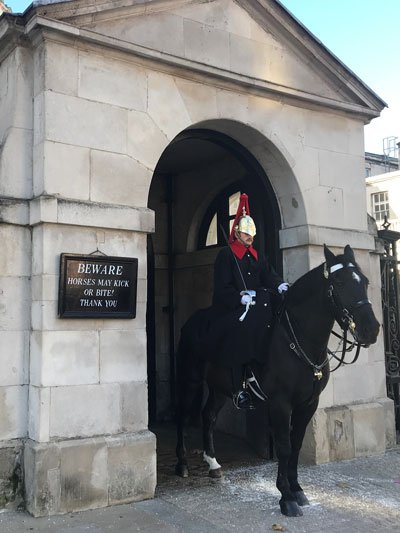Discover the most famous streets in London, from the history of the East End to the café society of Soho
My hometown of London has some of the most famous streets on the planet.
Many of these streets will be very familiar. They are home to some of London’s most famous landmarks, have political or historical significance, or have been immortalised in popular culture.
Others are less well-known but that does not mean that they are any less worthy of a visit.
But, as a whole, these iconic streets represent the cultural richness, historical legacy and diversity of London.
To make it easy for you, I’ve split these famous London streets into geographical areas. At the end of the article, you’ll find a handy map.
So pull on a pair of your comfiest shoes and explore the best London streets.
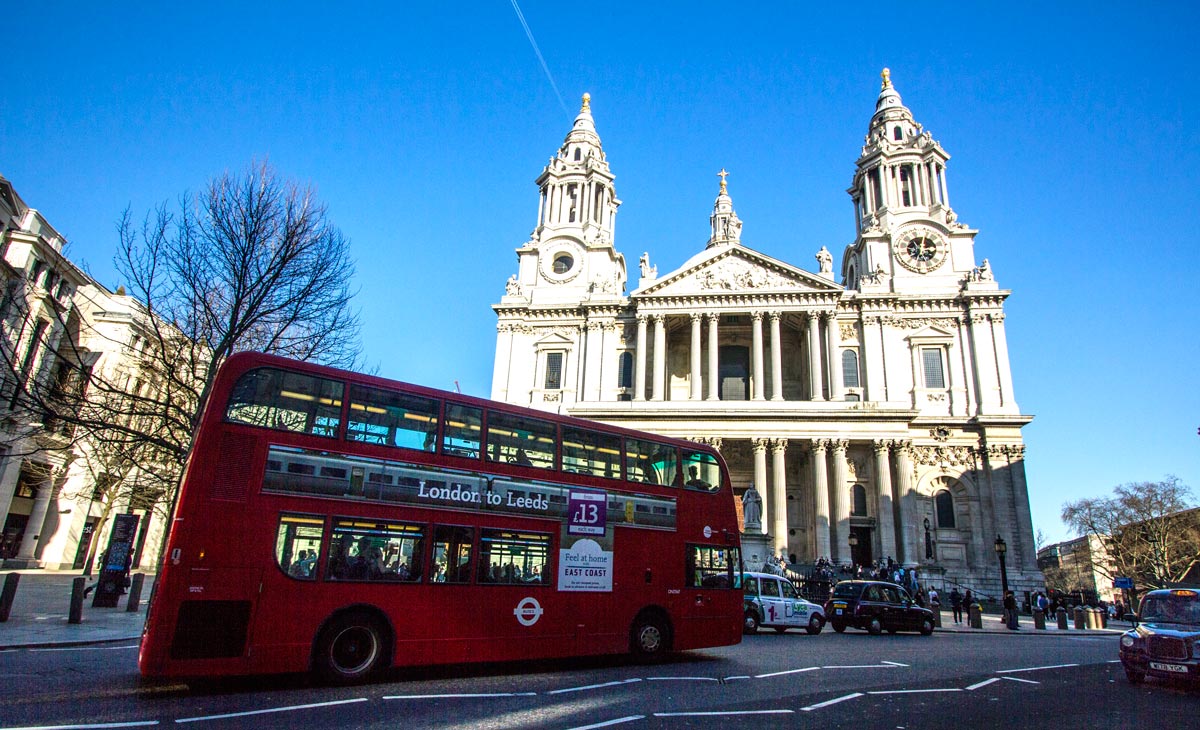
Alphabetical List of Famous Streets in London
Do you just want to dive into your favourite London street? No problem. Here is an A to Z list of the best streets in London.
Simply click on the link for more information.
PICCADILLY & ST. JAMES AREA
1. Piccadilly
Stretching from Piccadilly Circus in the east to Hyde Park Corner in the west, Piccadilly has been a main artery since Medieval times. Once called Portugal Street, this historic London street takes its name from piccadills, the ruffs that were worn by 17th Century dandies.
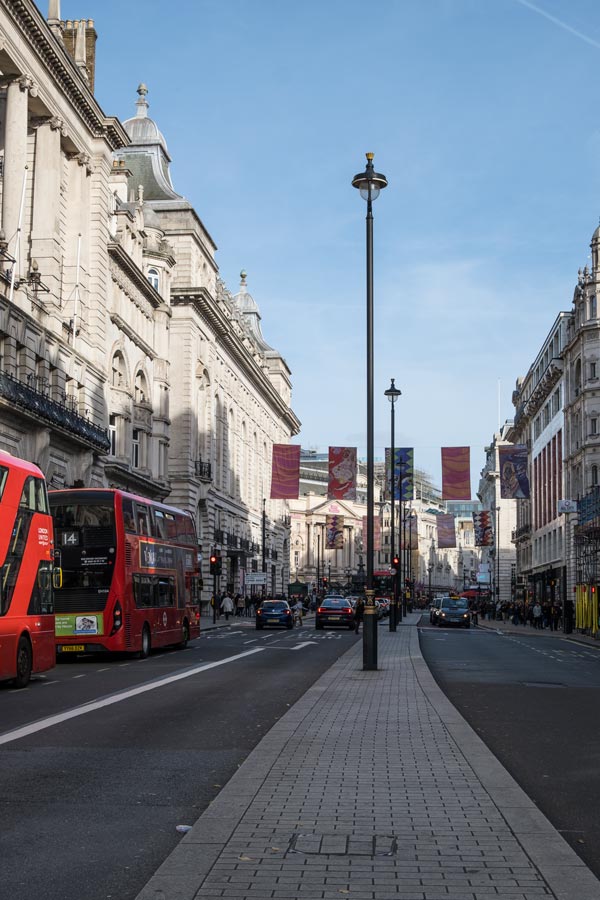
For years, people have congregated beneath the statue of Eros at Piccadilly Circus, London’s answer to New York’s Times Square. But you might be surprised to learn that this famous statue isn’t Eros at all, but his brother Anteros.
Walking down Piccadilly from the Circus, you’ll find St. James’s Church on the southern side of the road. Designed by Sir Christopher Wren in 1676, it’s worth visiting to take a peek at its ornate altar screen and exquisite marble font.
Piccadilly’s Fortnum & Mason, HM The King’s grocer, has been selling high-quality food for over 300 years. Piccadilly is also home to Hatchards, established in 1797, and the luxury stores of the 19th Century Burlington Arcade.
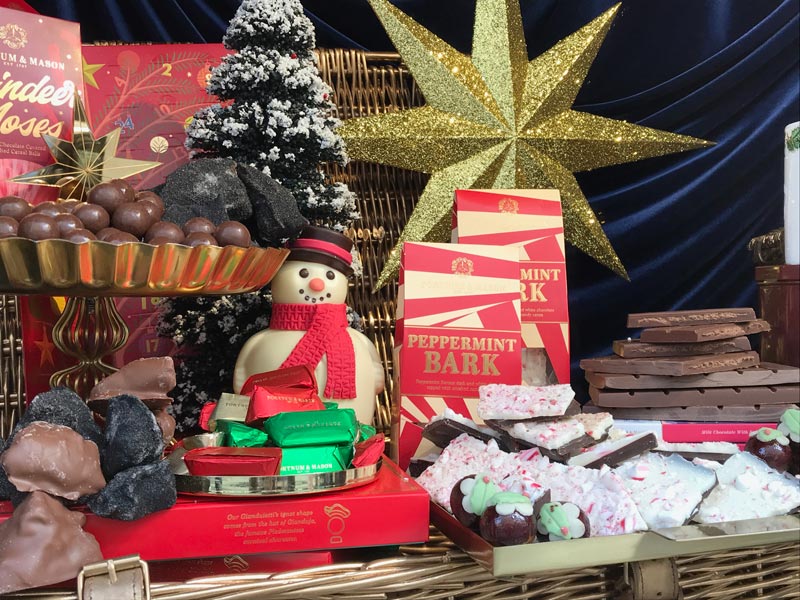
Next to Burlington Arcade is Burlington House, housing the Royal Academy, the Royal Astronomical Society and the Royal Geographical Society.
Several of London’s best luxury hotels, including the Ritz, the Athenaeum and the Intercontinental are located at the western end of Piccadilly.
Nearest Tube Station: Piccadilly Circus or Green Park
2. Jermyn Street
Dandies continue to make a beeline for Jermyn Street, famous for high-end gentlemen’s clothing and shoe shops. Amongst others, there are the famous shirt makers Thomas Pink and Hawes & Curtis, shoemakers John Lobb and Foster & Son and the wonderful Floris perfumery at number 89.
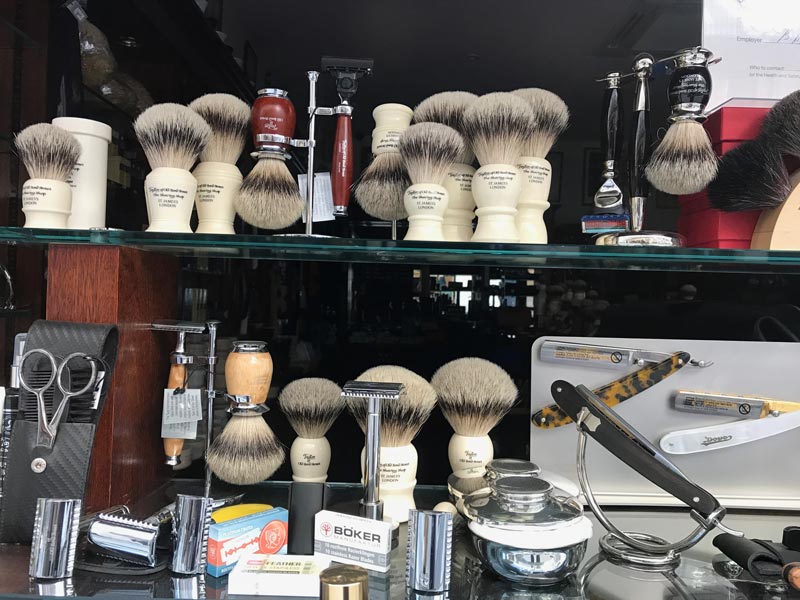
Jermyn Street was a favourite haunt of one of the most famous dandies of them all, Beau Brumell. Born in 1778, Beau Brummell, was famous for his friendship with George, Prince of Wales (latterly King George IV) and was an arbiter of fashion at the beginning of the 19th century.
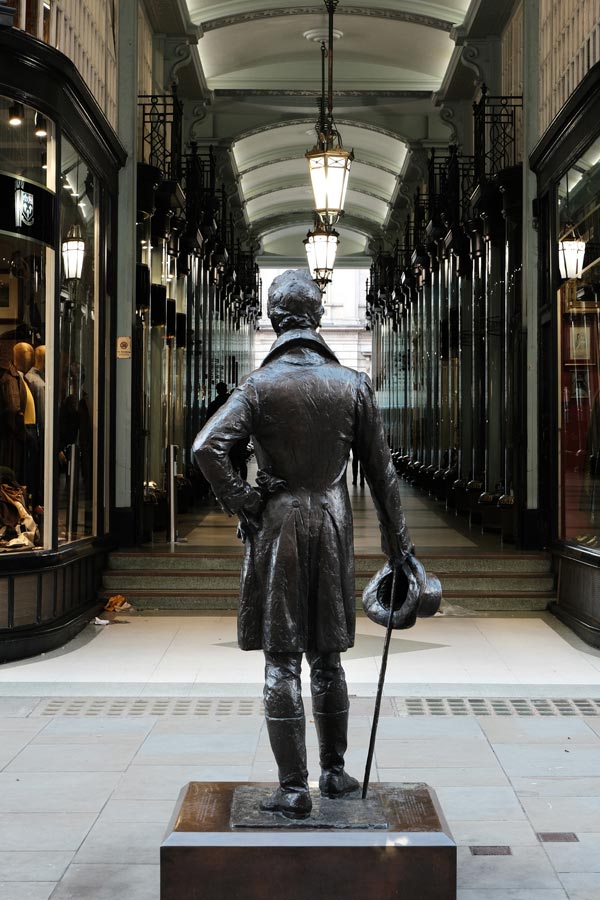
The street’s royal history stretches back to 1664 when Charles II authorised Henry Jermyn, Earl of St Albans, to develop a residential neighbourhood close to St James’s Palace. Sir Isaac Newton was one of its distinguished residents.
Many of the buildings on Jermyn Street are owned by the Crown Estate.
Nearest Tube Station: Piccadilly Circus or Green Park
3. Pall Mall
The Piccadilly & St. James’s area is also famous for its gentlemen’s clubs.
Set up by men from Britain’s upper classes from the 19th Century onwards, these exclusive establishments continue to provide a haven for businessmen (and a few women!).
Connecting St James’ Street to Trafalgar Square, Pall Mall is home to many of these private members’ clubs, including The Royal Automobile Club, The Reform Club, The Athenaeum and The Travellers Club. The Reform Club will be of particular interest to lovers of travel literature as it was from here that Jules Verne’s Phileas Fogg began and ended his journey Around the World in Eighty Days.
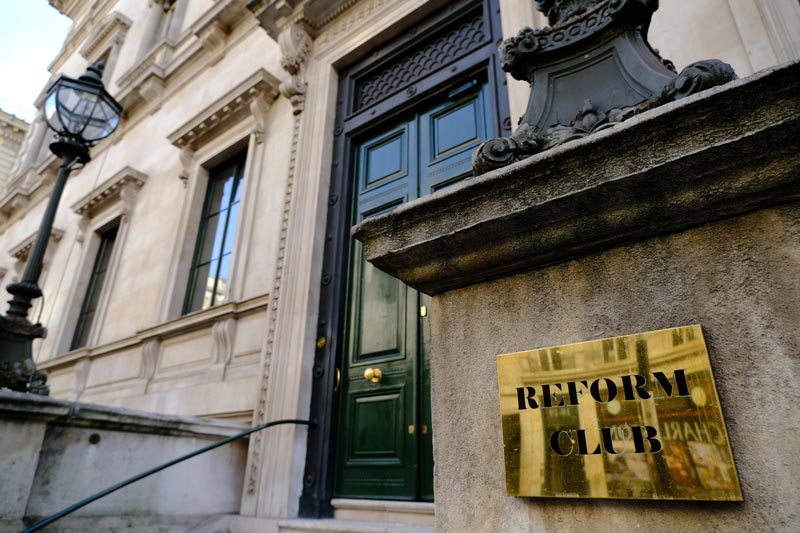
At the western end of Pall Mall is St. James’s Palace.
Built between 1531 and 1536, many of the palace’s original red-brick Tudor buildings erected by Henry VIII survive, including the gatehouse and the Chapel Royal. Today, the palace contains the London residences of The Prince of Wales, Princess Royal and Princess Alexandra.
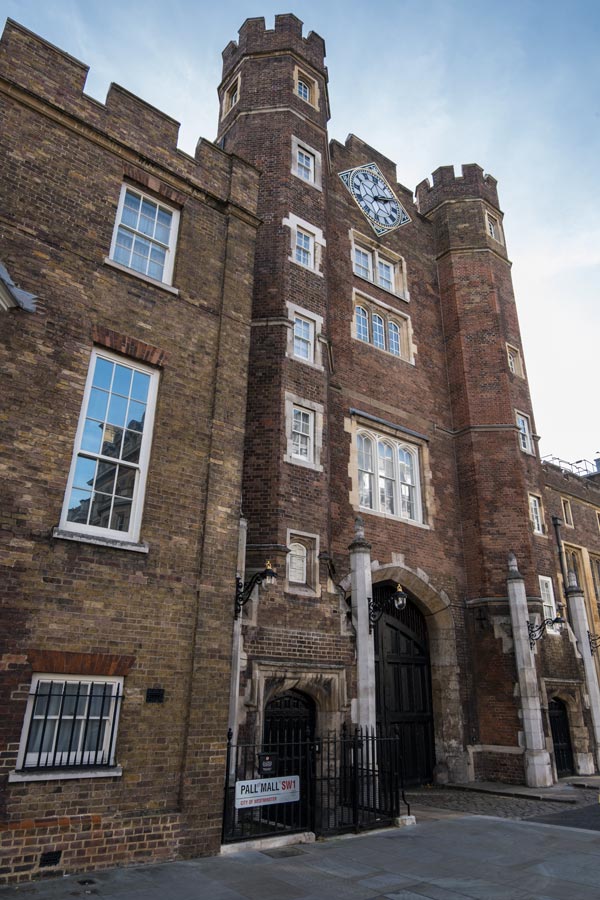
Nearest Tube Station: Piccadilly Circus, Green Park or Charing Cross
4. Saville Row
As the home of London’s finest bespoke tailors, Saville Row is synonymous with style.
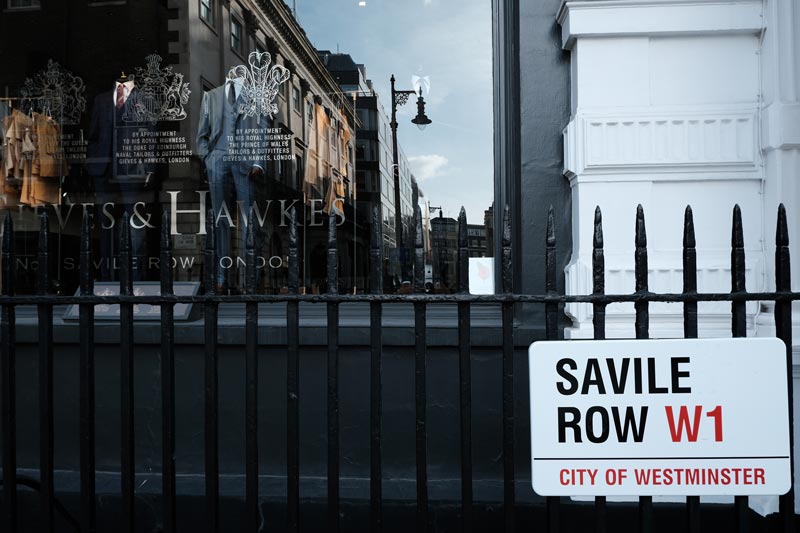
Henry Poole & Co at number 15 has made clothes for Winston Churchill, Charles Dickens, Napoleon III and General de Gaulle. This is also the birthplace of the dinner jacket; a tuxedo, as it was later known, was designed for the Prince of Wales in 1860.
In the late 1960s, The Beatles opened their Apple Corps Headquarters at 3 Saville Row. Their last ever concert, captured in the documentary film Let it Be, was filmed on the roof of this building.
The Royal Geographical Society was based at number one next door between 1870 to 1912.
Nearest Tube Station: Piccadilly Circus, Oxford Circus or Bond Street
5. Bond Street
Running between Piccadilly in the south and Oxford Street in the north, Bond Street is actually two streets: New Bond Street and Old Bond Street. They are named after Sir Thomas Bond, who developed the land.
If you are in the market for a new Tiffany bracelet, Bond Street is the place to go. It is home to more luxury designer shops than you could throw a stick at, including Jimmy Choo, Louis Vuitton, Dolce & Gabbana and Chanel.
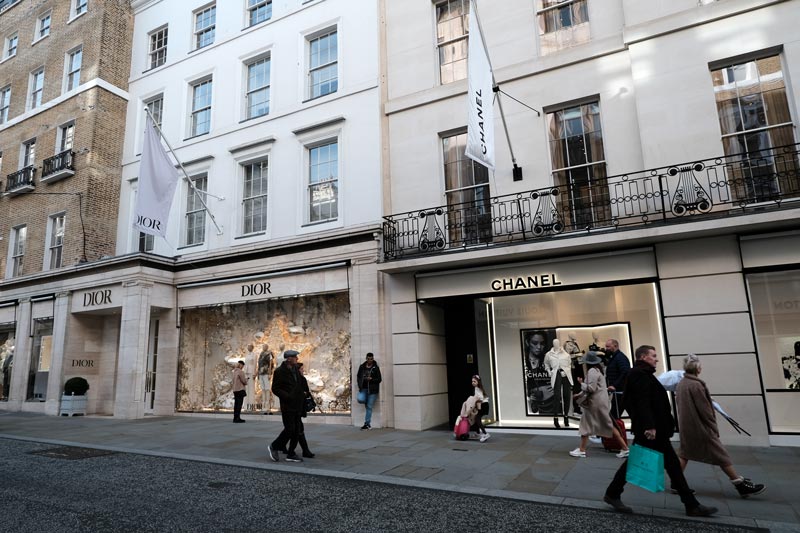
Sprinkled amongst these designer goods shops is an eclectic selection of galleries and the world-famous Sotheby’s auction house.
Close to the Chanel store is the “Allies” sculpture of Franklin D. Roosevelt and Winston Churchill. This charming sculpture of the two wartime leaders sitting on a bench having a chat was designed by Lawrence Holofcener in 1995.
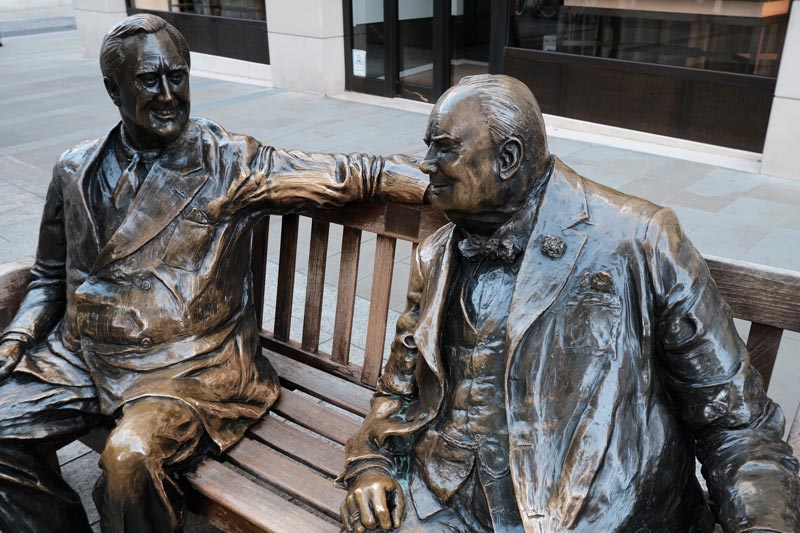
Nearest Tube Station: Bond Street or Green Park
FAMOUS STREETS IN LONDON’S WEST END
6. Oxford Street (London’s most famous shopping street)
Oxford Street may be one of the most popular streets in London but it is far from my favourite place in the capital.
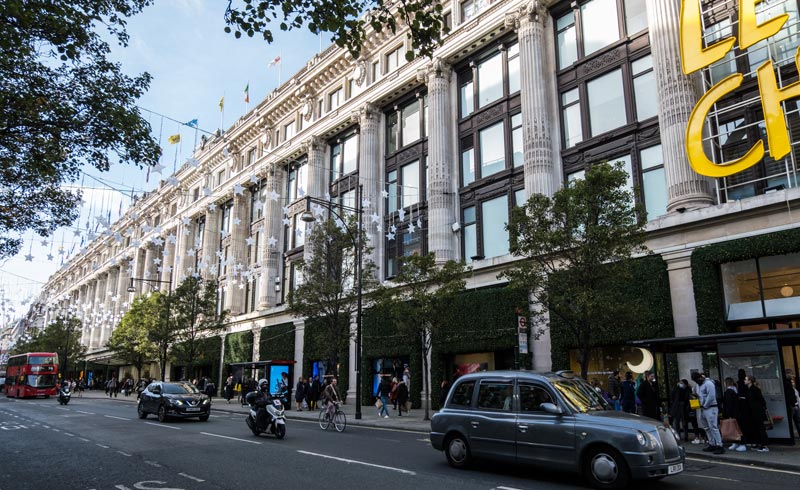
This West End thoroughfare is home to many high street retailers, including John Lewis, Marks and Spencer and Selfridges. This is perhaps the busiest street in London. Visit on a Saturday in the run-up to Christmas and it is utter carnage.
Sadly, too many of the units along Oxford Street, particularly at its eastern end, are occupied by discount perfume shops, garish sweet shops, stores selling souvenir tat and foreign exchange outlets. Westminster Council continues to be deaf to appeals to pedestrianise the street.
That said, Oxford Street is one of the world’s most famous shopping streets.
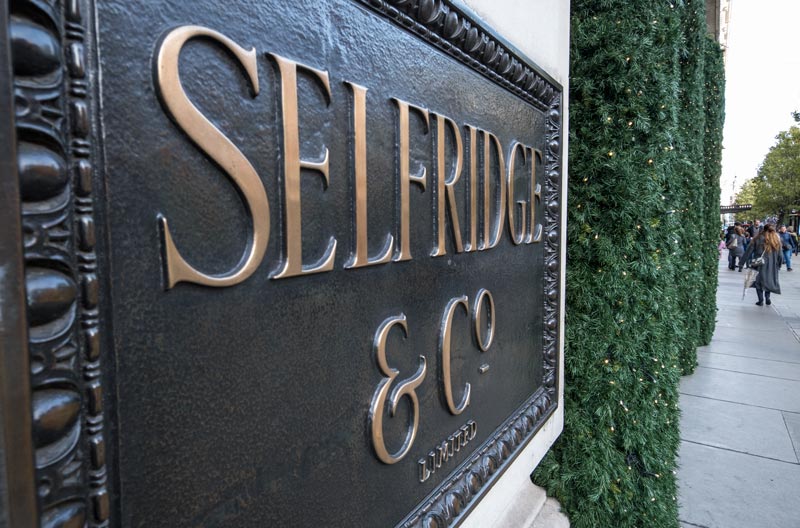
Nearest Tube Station: Oxford Circus, Tottenham Court Road, Bond Street or Marble Arch
7. Regent Street
Stretching between Piccadilly Circus and Oxford Circus, Regent Street is Oxford Street’s more upmarket, and architecturally distinguished, cousin.
Named after George IV when he was Prince Regent, it was laid out as a purpose-built shopping street in the early 19th Century under the supervision of the architect John Nash. Between the 1890s and 1920s, Regent Street was rebuilt and each of the grand buildings that curve up the street was finished in Portland stone, creating a harmonious façade.
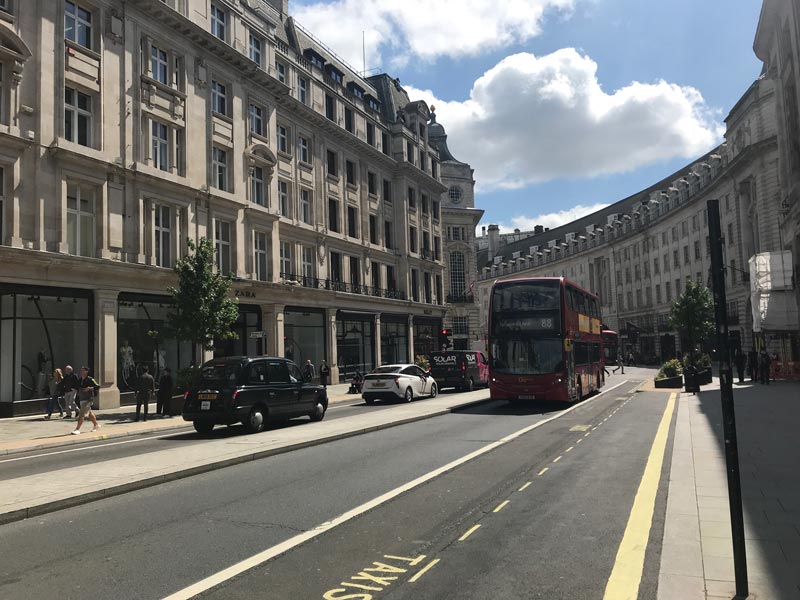
Did you know that every building on Regent Street is Grade II listed? Today, it is still one of the most London streets for shopping and is one of the best places in London to see the Christmas lights.
Its most famous resident is Liberty London. Established in 1875, this Tudor revival building is filled with high-end fashion and luxury homeware, including its iconic fabric line.
Kids young and old should head to Hamleys Toy Store at 188 – 196 Regent Street. Spanning seven floors, this flagship store sells more than 50,000 lines of toys.
Nearest Tube Station: Oxford Circus or Piccadilly Circus
8. Denmark Street
Welcome to London’s version of Tin Pan Alley.
Denmark Street was developed on the edge of the West End in 1689 and is named after Prince George of Denmark. This was the scene for one of the drawings of Hogarth’s series Four Times of the Day.
Later, Denmark Street became famous as the home of a number of music publishers’ offices. With the decline of this market in the 1960s, music shops and independent recording studios moved in.
Such music greats as The Rolling Stones and Elton John recorded or wrote their songs here. It is also credited with being punk rock’s ground zero.
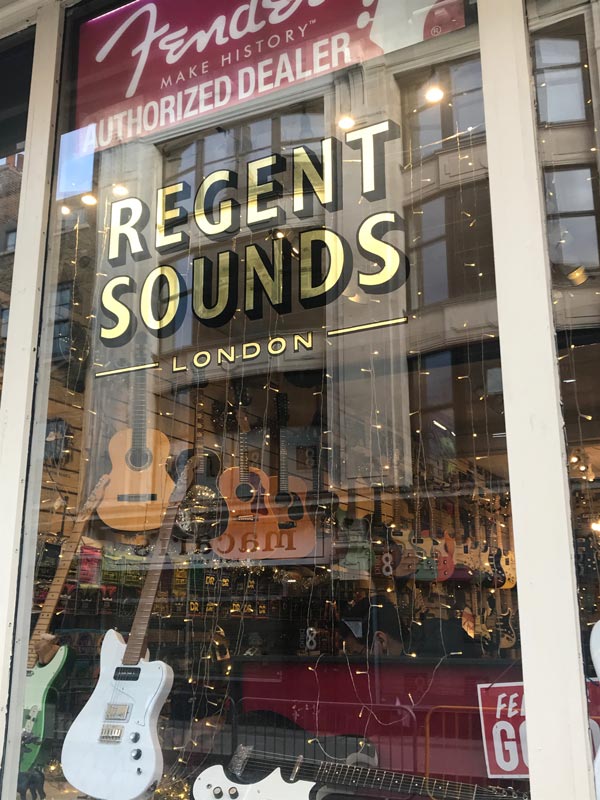
Today’s Denmark Street houses mainly guitar shops, and it has eight Grade-II listed buildings. Although the Crossrail project has forced a major redevelopment of the area, the developers of the new site have stated they are “committed to preserving and enhancing the rich musical heritage of Tin Pan Alley”.
Let’s hope that is the case.
Nearest Tube Station: Tottenham Court Road
9. Harley Street
Are you looking for a quick nip-and-tuck? If so, Harley Street is the place to come.
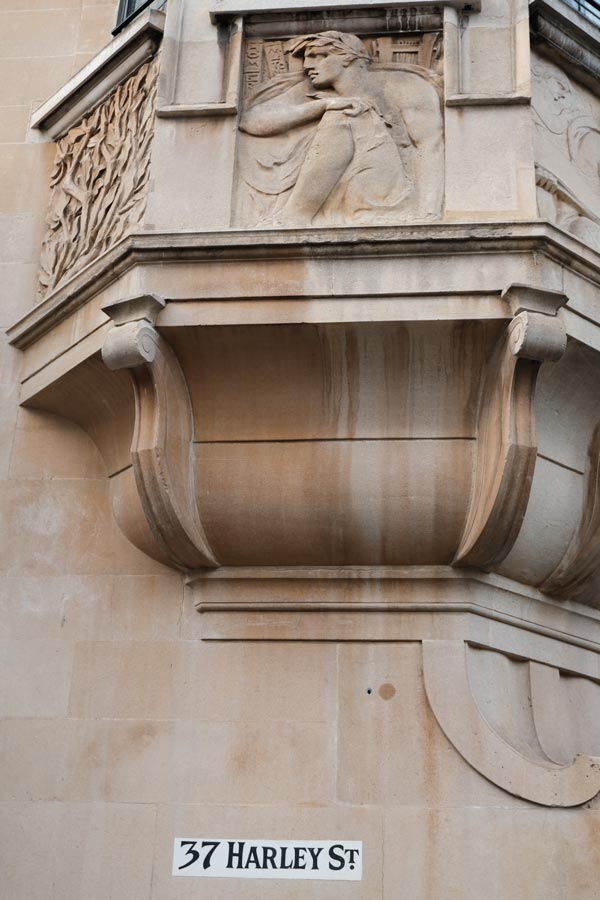
But despite its reputation as a mecca for cosmetic surgery, only a small fraction of the private medical professionals on Harley Street specialise in this work. Whatever your medical condition, there is a Harley Street clinic to deal with it.
Taking its name from Thomas Harley who was Lord Mayor of London in 1767, people have been consulting Harley Street’s practitioners since the 19th Century. It is thought that doctors were attracted to the area by the development of spacious housing and its proximity to several London railway stations.
Nearest Tube Station: Regent’s Park or Great Portland Street
NORTH LONDON
10. Baker Street
I defy you not to hum THAT saxophone solo when you walk down Baker Street. The 1978 release Baker Street by Gerry Rafferty reached number 3 in the UK charts and number two on the Billboard Hot 100.
However, Baker Street achieved worldwide fame as the home of the fictional detective Sherlock Holmes. In the popular series of novels and short stories by Sir Arthur Conan Doyle, Sherlock resides at 221b Baker Street.
In fact, this address was also fictitious, but there is a museum dedicated to the character at this point on Baker Street.
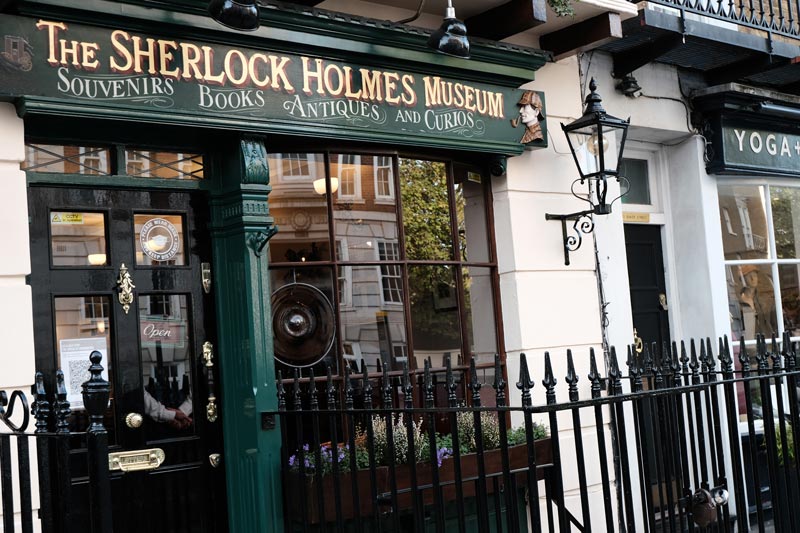
This famous London street takes its name from the builder William Baker, who developed the street in 1755 for affluent Londoners. Over the years, Prime Minister William Pitt the Younger, HG Wells and Dusty Springfield have been residents of Baker Street.
Nearest Tube Station: Baker Street
11. Camden High Street
Are you in the market for a new pair of Doc Martens or a piercing? If so, take the Northern Line to Camden Town.
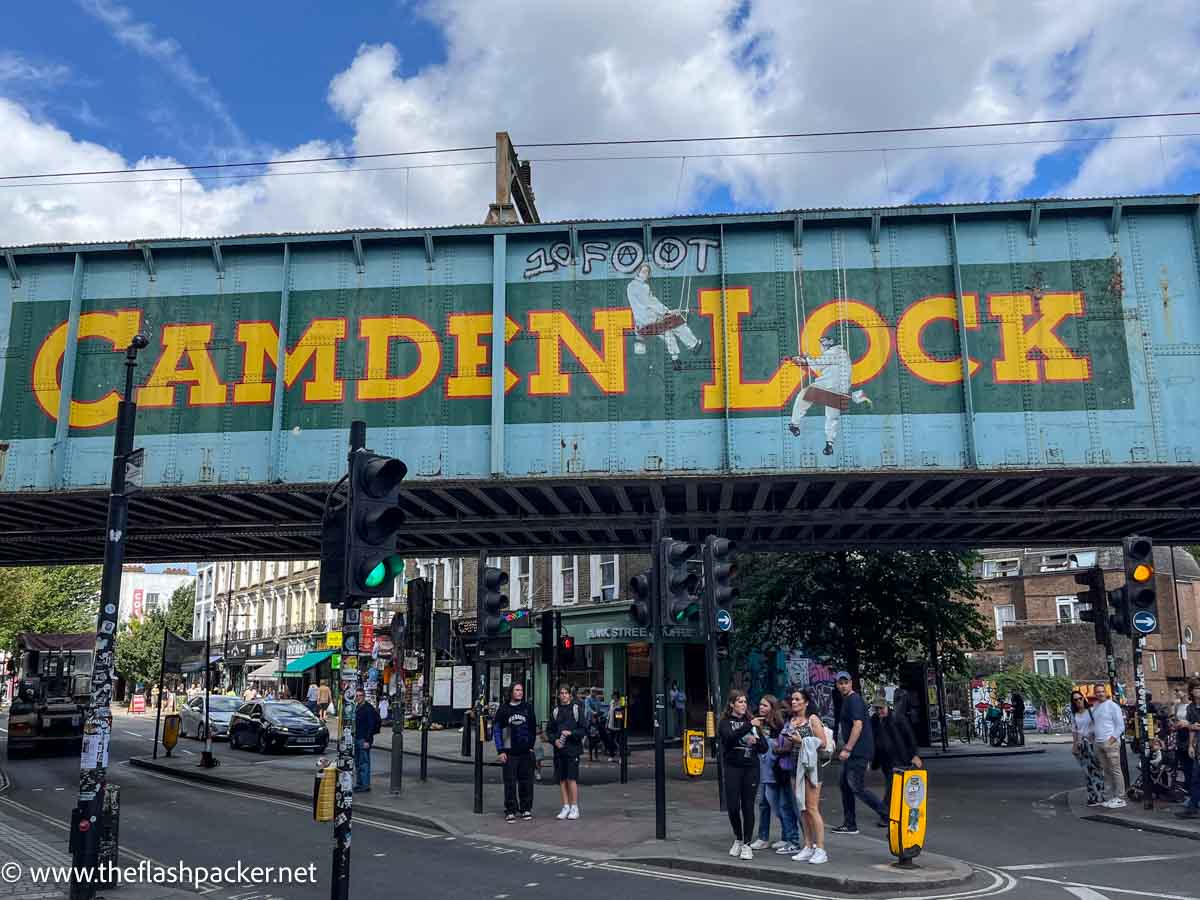
Along Camden High Street tattoo parlours rub shoulders with stores selling previously-loved vinyl; vintage clothing shops coexist with craft shops. But it is Camden Market that draws the crowds.
Located by Camden Lock at the northern end of Camden High Street, this market is home to a diverse range of stalls, shops and street food outlets. It is open seven days a week from 10 am to 6 pm.
This North London neighbourhood also has first-rate murals and graffiti. Check out my guide to find the best street art in Camden.
Nearest Tube Station: Camden Town
12. Abbey Road
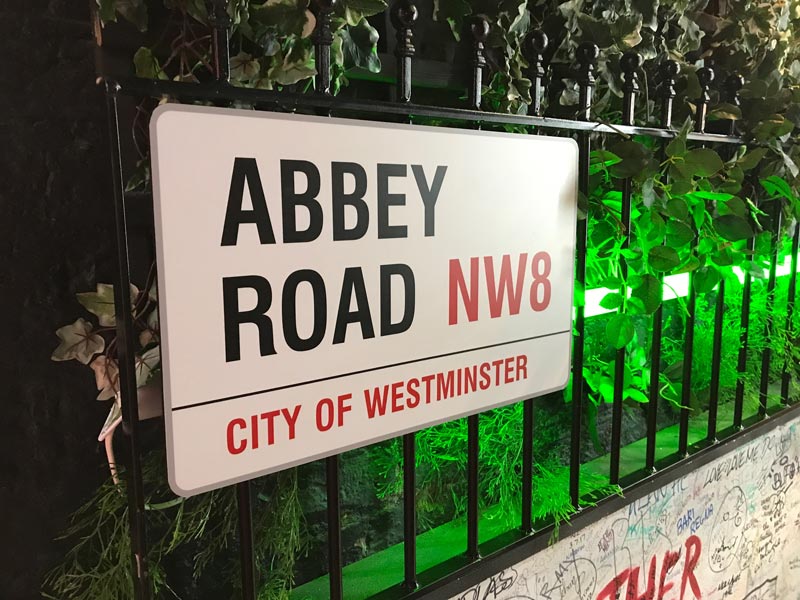
Immortalised by The Beatles, Abbey Road is where the Fab Four recorded their eponymous 1969 album and photographed the album’s cover. Since 2010, the iconic zebra crossing in this unremarkable street in leafy St John’s Wood has Grade II status, meaning it cannot be altered or demolished.
The Beatles aren’t the only artists to have recorded at Abbey Road. Music legends such as Aretha Franklin, Pink Floyd and Radiohead have recorded here since the studios opened in 1929.
Wave to the Abbey Road webcam as you step across the crossing and view your footage later. Write on the graffiti wall and shop for music memorabilia at the Abbey Road Shop.
The recording studios aren’t open for guided tours. However, for a hefty fee, you may be able to attend one of the pre-bookable lectures held in Studio 2.
Further information is here.
Nearest Tube Station: St. John’s Wood
SOHO & COVENT GARDEN
13. Shaftesbury Avenue
Shaftesbury Avenue is the epicentre of London’s theatre district. It is home to six of London’s theatres: Lyric, Apollo, Gielgud, Sondheim, Palace and Shaftesbury theatres.
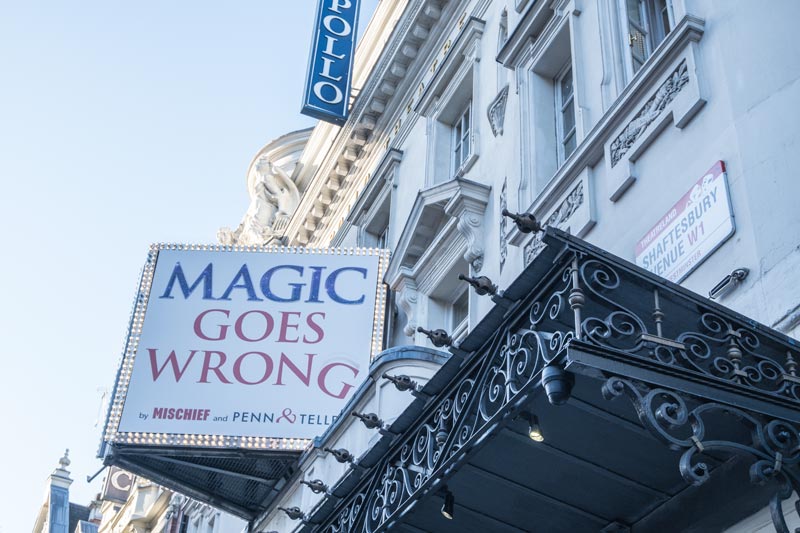
Stretching from Piccadilly Circus in the south to High Holborn at its northern end, Shaftesbury Avenue borders Chinatown, Soho and Covent Garden. It takes its name from the Earl of Shaftesbury (1801 – 85) who was instrumental in improving housing conditions for the local poor.
Nearest Tube Station: Leicester Square or Piccadilly Circus
14. Gerrard Street
Gerrard Street is the main artery of London’s Chinatown and is brimming with Asian supermarkets and restaurants. Topped and tailed by red gates and festooned with Chinese lanterns it is always lively, especially around Lunar New Year.
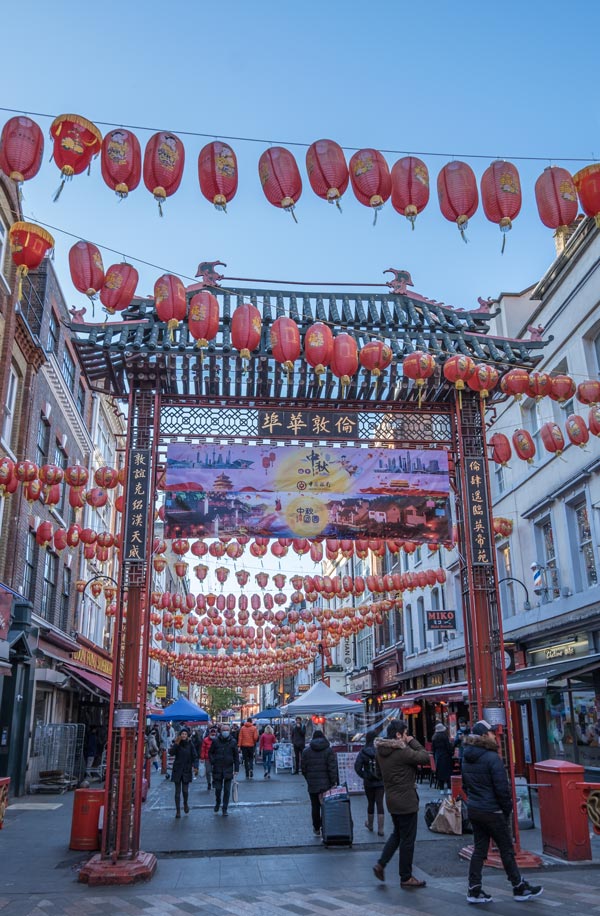
Once home to Huguenot and Maltese immigrants, Chinatown as we know it today began life in the 1950s with the opening of a few Chinese restaurants. A decline in the fortunes of Limehouse, in London’s East End, saw London’s original Chinatown move from here to the area around Gerrard Street in the 1960s and 1970s.
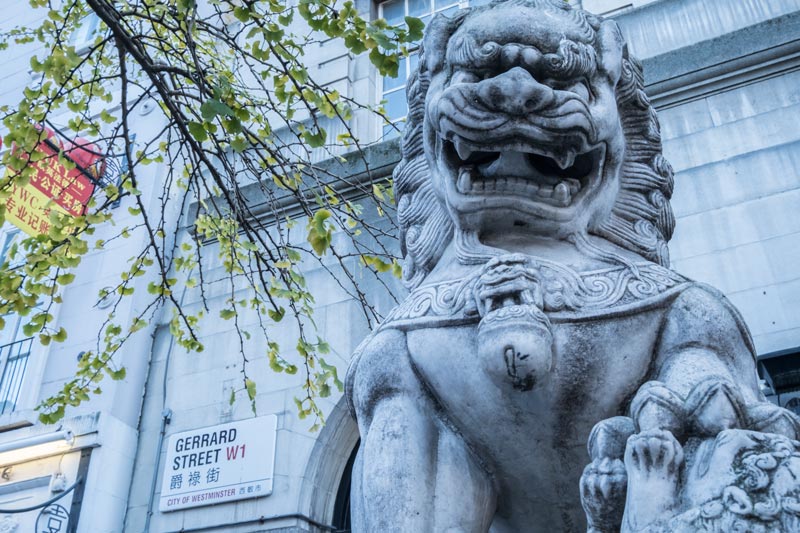
Nearest Tube Station: Leicester Square
15. Greek Street
Named after the Greek Christians who settled in Soho in the 17th Century, Greek Street runs from Shaftesbury Avenue to Soho Square and crosses Old Compton Street.
Greek Street is home to not one, but two famous pubs.
The Coach & Horses, on the corner of Romilly Street, is more of an institution than a pub. Established in 1847, is it famous for its political and journalistic associations, notably with the columnist Jeffrey Bernard.
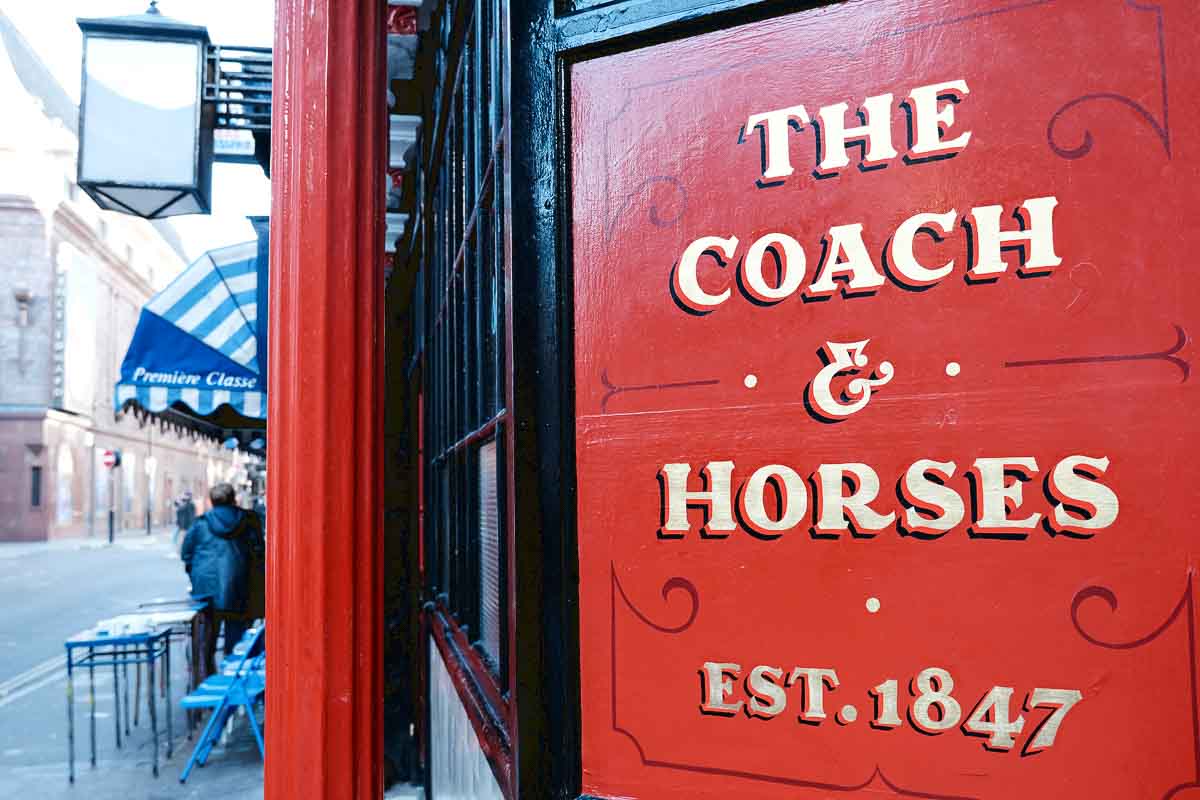
In May 2019, the Coach and Horses was granted a nudist licence, allowing patrons and employees to be naked while in the pub. I am happy to report that I have drunk in there since this licence was granted and all occupants were fully clothed.
A bit further up Greek Street, the Pillars of Hercules boozer dates back to the early 18th Century.
In its day, this was a well-known literary haunt, favoured by the likes of Clive James, Julian Barnes, Martin Amis and Ian McEwan. After closing for refurbishment, it reopened as Bar Hercules.
Greek Street is crammed with a great selection of restaurants and cafes, including Maison Bertaux, the place to go for French patisserie delights in London.
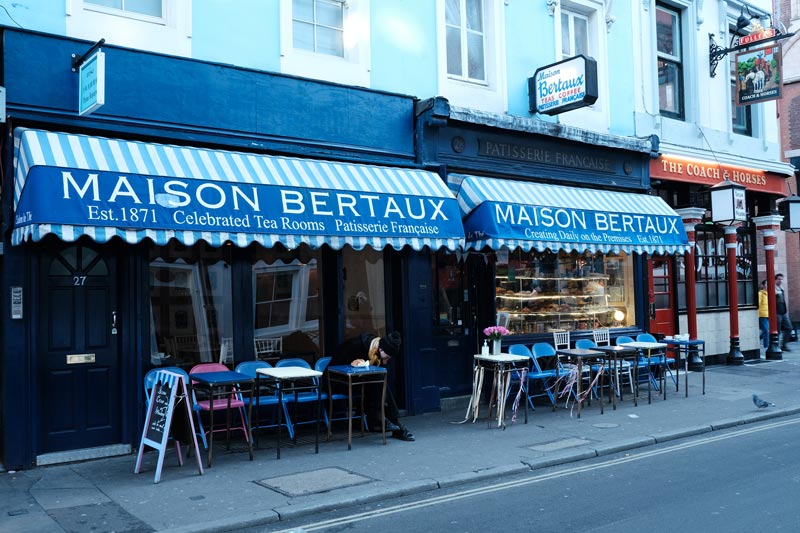
Nearest Tube Station: Leicester Square or Tottenham Court Road
16. Frith Street
Running parallel to Greek Street, Frith Street is another popular Soho hangout.
It deserves a place on this list of famous London streets purely because it is the home of one of London’s most cherished caffeinating joints. Bar Italia has been a Frith Street fixture since 1949 (I’ve had many a late-night coffee here over the years).
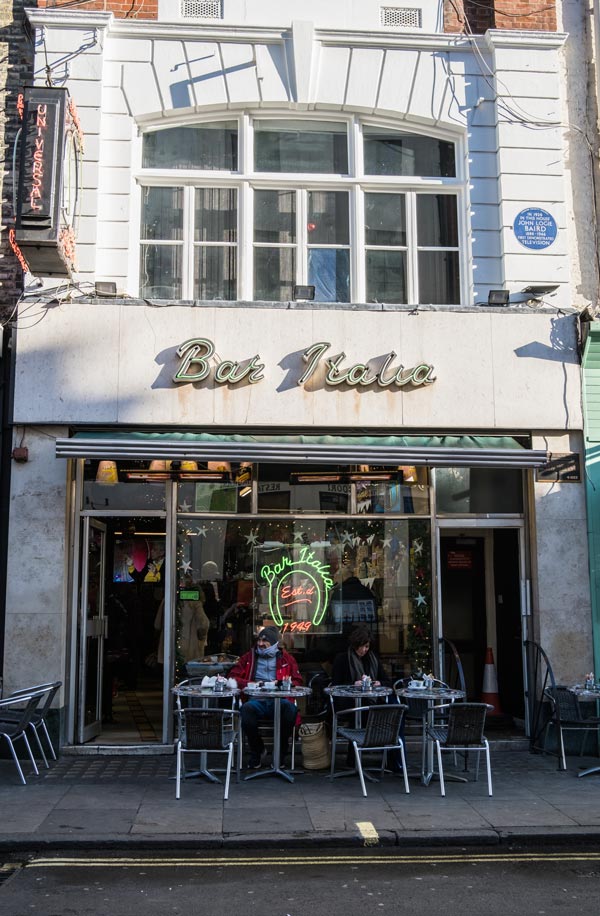
Look out for the blue plaque above its front door. This commemorates the first public demonstration of television in this building by John Logie Baird in 1926.
Across the road at number 47 is Ronnie Scott’s. This famous club has been entertaining jazz lovers in Frith Street since 1965.
Nearest Tube Station: Leicester Square or Tottenham Court Road
17. Old Compton Street
Crossing both Frith Street and Greek Street is Old Compton Street, the focal point of London’s LGBTQ+ scene.
Rainbow flags brighten the exteriors of the Admiral Duncan pub and G-A-Y nightclub. Lively at any time of year, Old Compton Street explodes with colour and vitality during London Pride, usually held the last weekend of June each year.
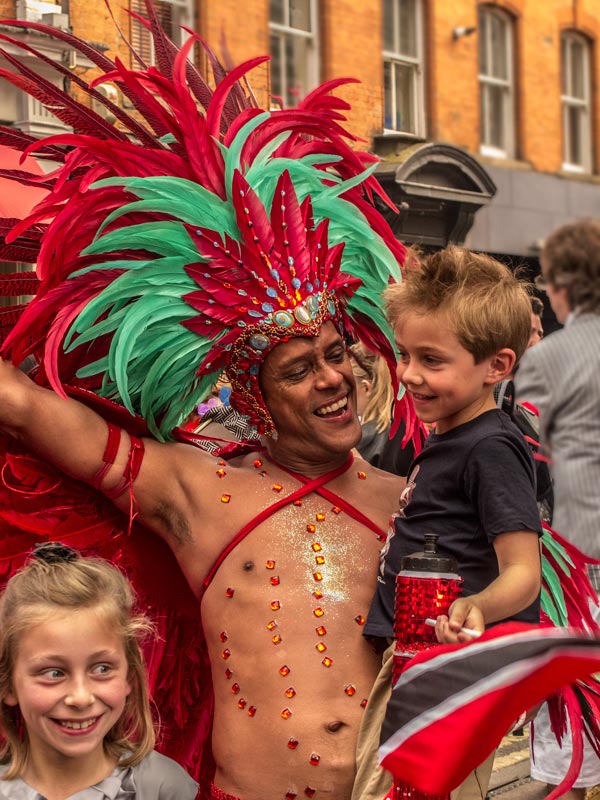
As well as a good selection of eateries, it is home to the wonderfully pungent Algerian Coffee Stores, Gerry’s Wines and Spirits‘ eclectic selection of booze and the traditional family-run deli I Camisa & Son.
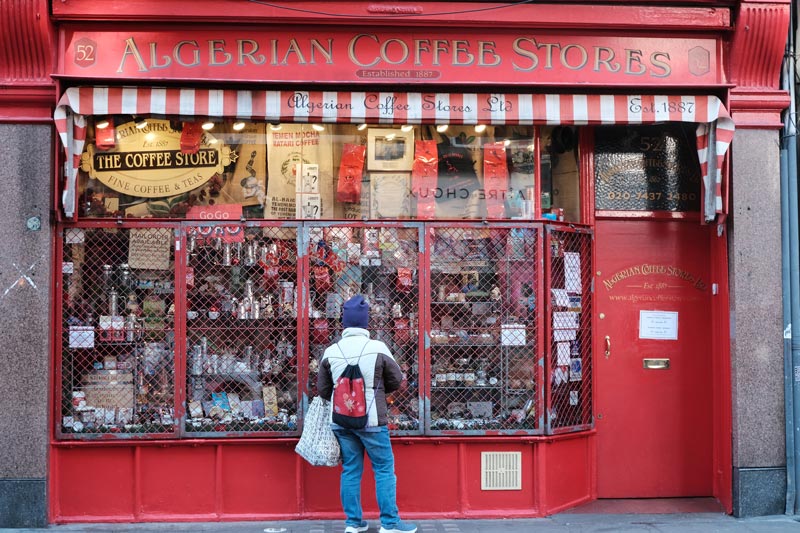
Nearest Tube Station: Leicester Square, Piccadilly Circus or Tottenham Court Road
18. Neal’s Yard
Former warehouses line Neal’s Yard in the Seven Dials enclave of Covent Garden. Named after the 17th-century developer, Thomas Neale, this narrow street runs between Monmouth Street and Short’s Garden, opening into a charming courtyard at its midpoint.
Neal’s Yard isn’t exactly a well-kept secret but is no less appealing for this. You’ll find one of London’s best cheese shops here – Neal’s Yard Dairy – and Neal’s Yard Remedies which specialises in organic beauty and skincare products.
Nearest Tube Station: Covent Garden. However, as this Tube station can be very busy and relies on lifts to take passengers from platform level, I recommend walking the short distance from Leicester Square or Tottenham Court Road
19. The Strand
Connecting Trafalgar Square and Fleet Street and the City of London, The Strand is one of the best streets in London and certainly one of the most interesting.
It takes its name from strond, the old English word for river edge. Until 1870, The Strand lined the Thames and all its big riverside houses had their own river gates or steps.
There is no shortage of show-stopping buildings along the ¾ mile length of this thoroughfare.
Close to Waterloo Bridge, one of London’s famous bridges, isSomerset House. This magnificent Neoclassical complex houses exhibition spaces, including the Courtauld Gallery, one of London’s best art galleries.
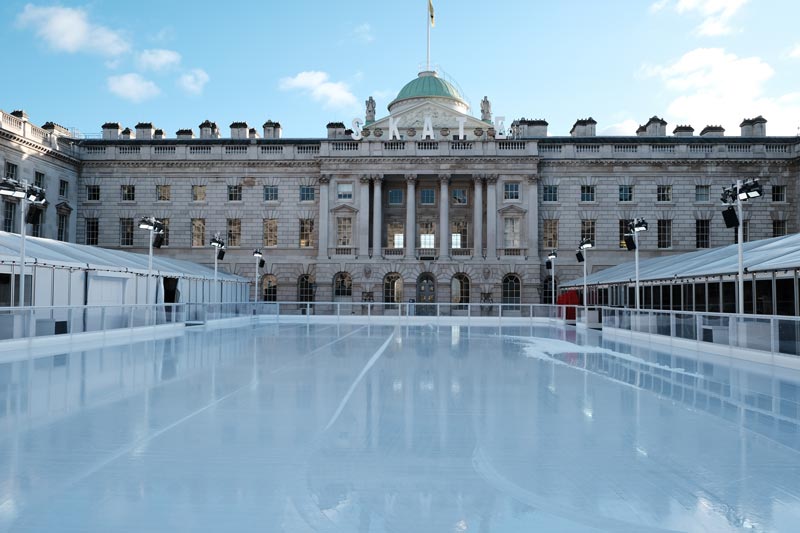
55 fountains dance in its vast courtyard which is transformed into one of the capital’s best ice skating rinks in the winter months.
St Mary-le-Strand and St Clement Danes, two of London’s historic churches are marooned on islands in the middle of The Strand. The latter is referred to in the famous nursery rhyme “Oranges and lemons say the bells of St Clement’s.”
Built in 1889 by the theatrical impresario Richard D’Oyly Carte, The Savoy Hotel is one of London’s most famous luxury hotels. The hotel’s American Bar is THE place in town to sip a martini.
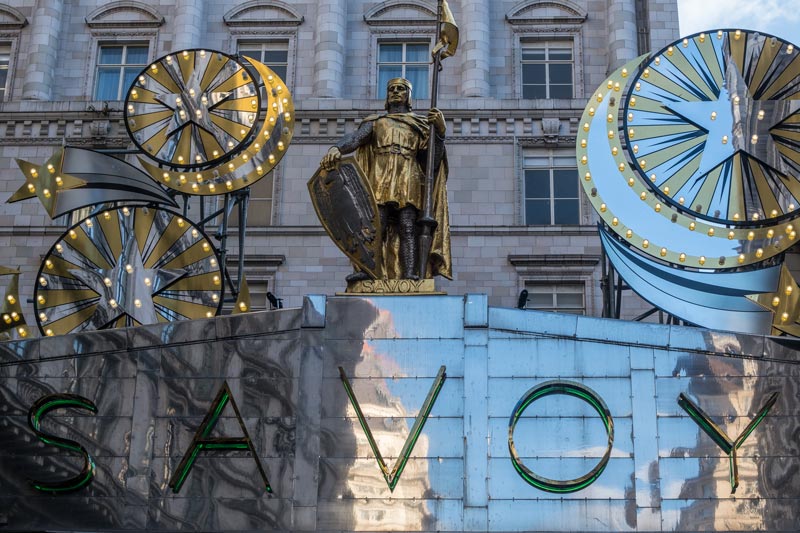
The Savoy is one of only two places in the UK where you drive on the right-hand side of the road, not the left (if you’re interested, the other is reportedly Hammersmith bus station).
Established in 1828, Simpson’s in the Strand is one of London’s oldest restaurants.
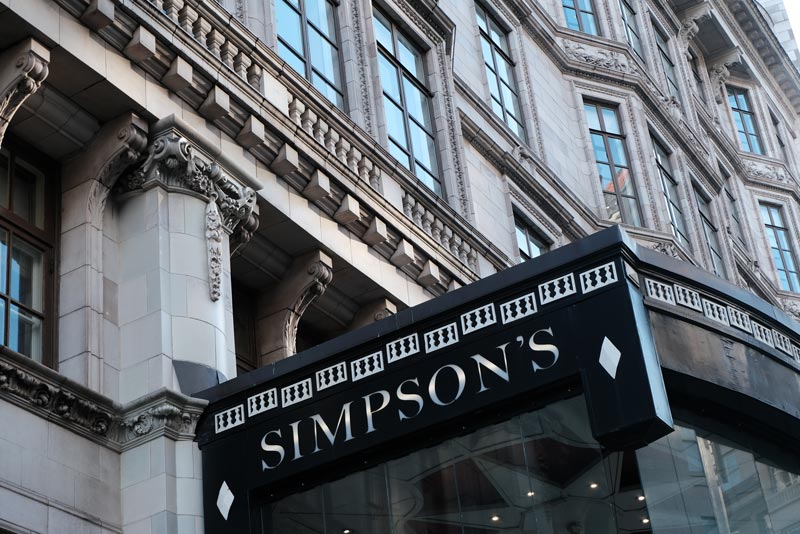
Older still is Twinings tea shop at 216 Strand. This opened in 1706, making it one of the oldest businesses in London operating at its original premises. Its small museum is worth a visit and is free.
Nearest Tube Station: Charing Cross, Embankment or Temple
FAMOUS STREETS IN EAST LONDON
20. Fleet Street
Named after the river that played an important part in London life for many centuries (long since covered over), Fleet Street connects The Strand to Ludgate Circus in the City of London.
This famous London street is best known as the former home of the British newspaper industry. Whilst the so-called Street of Ink lost most of its newspaper trade in the 1980s, some of its offices remain, notably the magnificent Art Deco Daily Express building.
This remains one of London’s most historic streets.
You can still see the statues of dragons that marked the entrance to the City and Fleet Street is home to one of London’s oldest pubs, Ye Olde Cheshire Cheese. Rebuilt shortly after the Great Fire of London, this pub included Dr Samuel Johnson, Samuel Pepys, Charles Dickens and Mark Twain amongst its patrons.
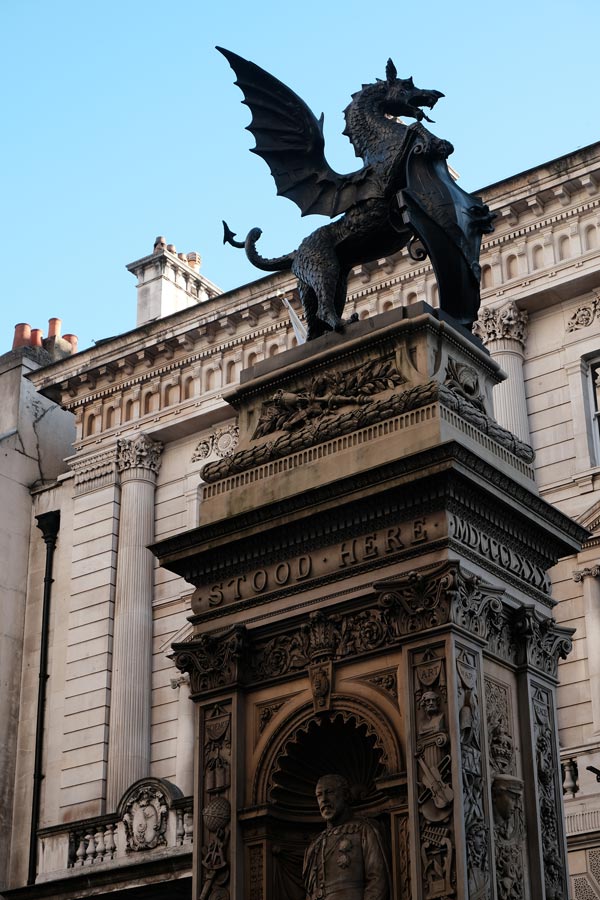
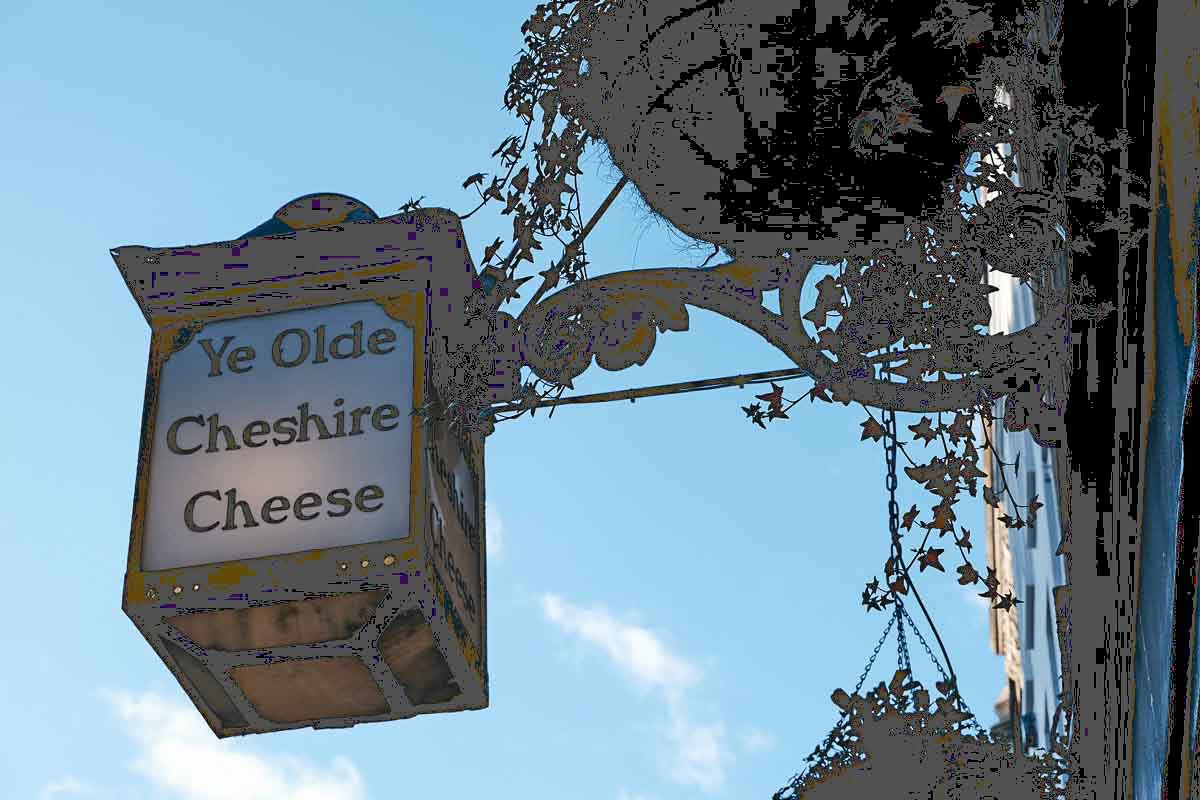
St Bride’s, one of Christopher Wren’s best-loved churches Church, is also on Fleet Street. Traditionally the venue for memorials for departed journalists, its elaborate octagonal layered spire has inspired the tiered wedding cake since 1703.
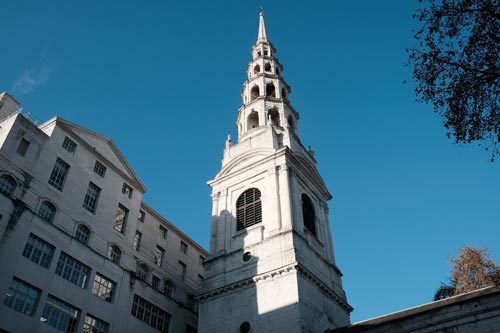
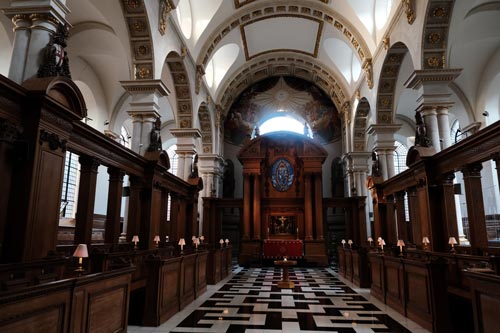
Nearest Tube Station: Blackfriars
21. Pudding Lane (one of London’s most historic streets)
This blink-and-you’ll-miss-it London road is the location of Thomas Farriner’s bakery, where the Great Fire of London started.
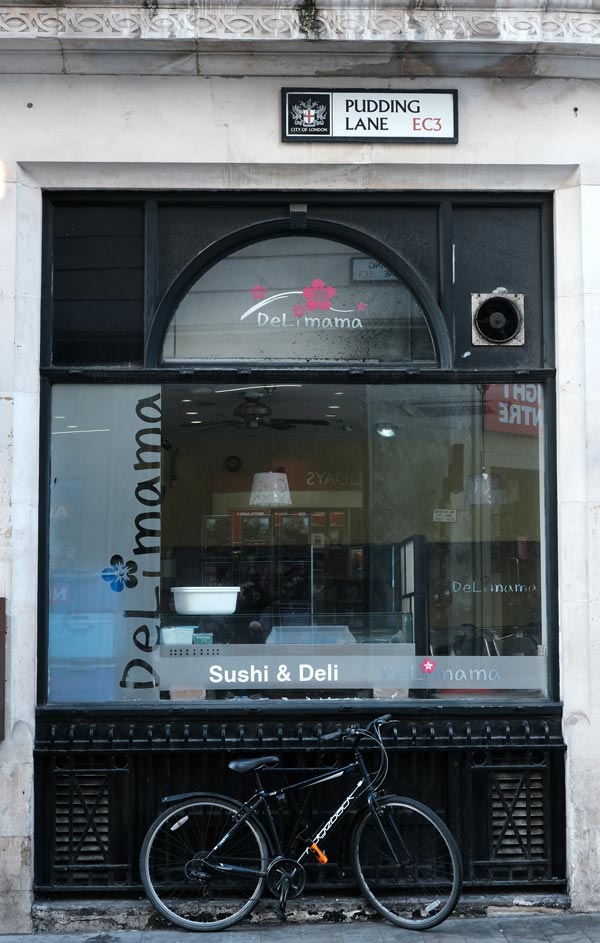
A spark from the baker’s oven resulted in an inferno that tore through the City of London for four days in September 1666. Its trail of destruction included 13,200 houses, 87 parish churches and St Paul’s Cathedral.
The bakery stood at 23 Pudding Lane, opposite the Monument. Although the site was paved over when Monument Street was built in the late 19th Century, it is marked by a plaque on the wall of nearby Farynors House.
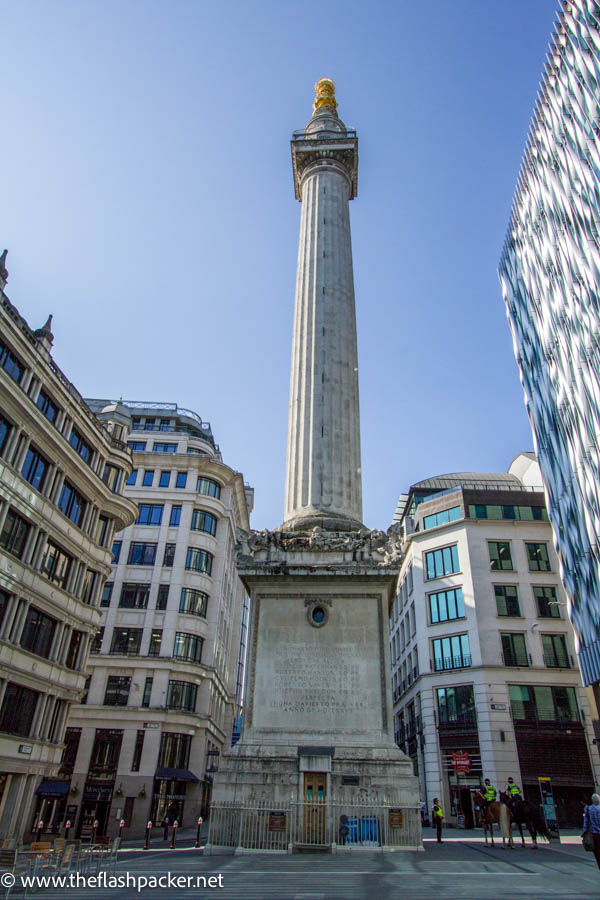
Nearest Tube Station: Monument or Bank
22. Threadneedle Street
One of nine streets that converge at the Bank junction, Threadneedle Street is famous as the site of the Bank of England. The bank itself has been in its current location since 1734, and is often called ‘the Old Lady of Threadneedle Street’.
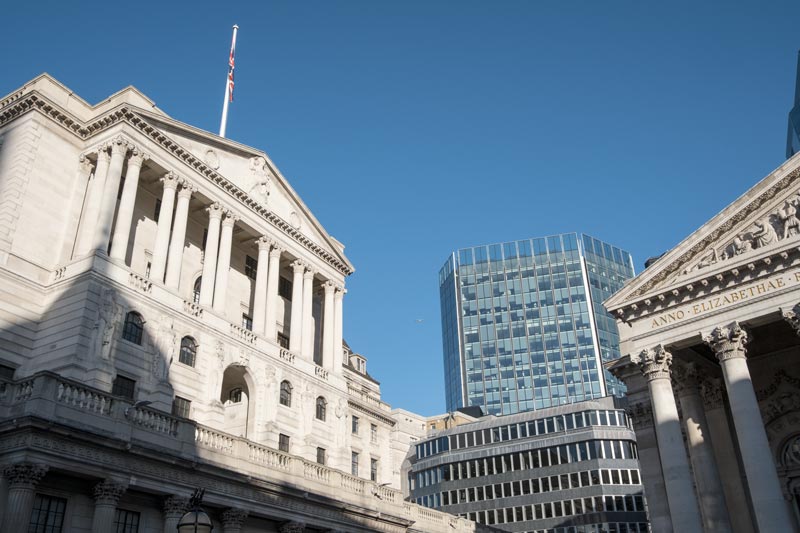
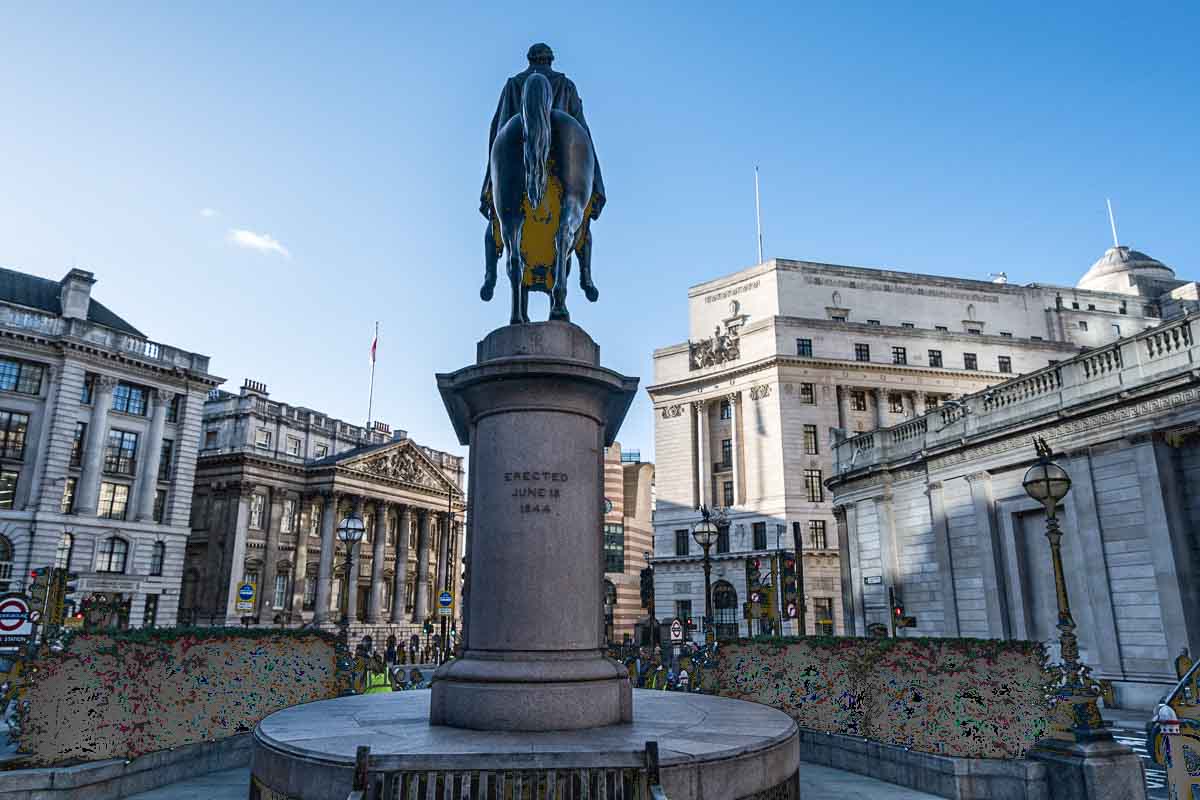
Its name is thought to relate to the street’s early role as a centre of the tailoring trade. The Merchant Taylors’ Company’s hall has been here since the 14th century.
Nearest Tube Station: Bank
23. Brick Lane
Brick Lane has provided safe haven for centuries.
First settled by Protestant Huguenot refugees escaping religious persecution in France, in the 17th and 18th Centuries Brick Lane provided refuge to the Jewish community. Bengalis came to the area after the Second World War, establishing British curry house culture.
Today’s Brick Lane is known for these curry houses, which are an important part of London’s food landscape.
However, my favourite Brick lane culinary experience is to grab a humble bagel at Beigel Bake. This 24-hour bagel shop sells delicious freshly-baked made filled bagels for a pittance.
This vibrant street is a hipster hotspot of quirky bars, art galleries, vintage clothing stores and textile shops. It also hosts a large market every Sunday between 10 am and 5 pm.
Brick Lane is also the epicentre of street art in London. Building walls, hoardings, doors and shop shutters form the canvas for frequently-changing artworks, from massive murals to small paintings to stickers and posters.
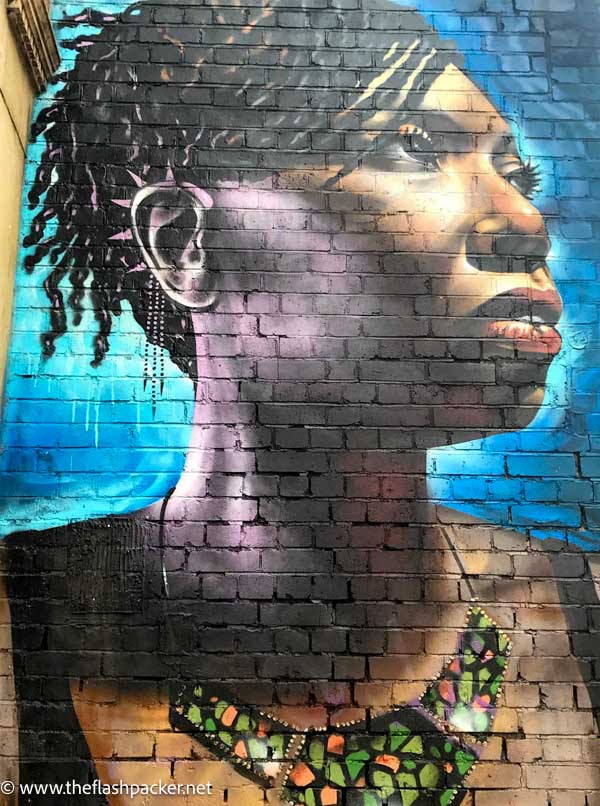
One of the best things to do in London is to explore this urban art on a self-guided East End street art tour. Or if you fancy doing it with a guide, book a guided London street art tour.
Nearest Tube Station: Liverpool Street or Aldgate East
24. Columbia Road
Visiting at least one market is a good use of time in London. There are many to choose from but one of my favourites is the Columbia Road Flower Market.
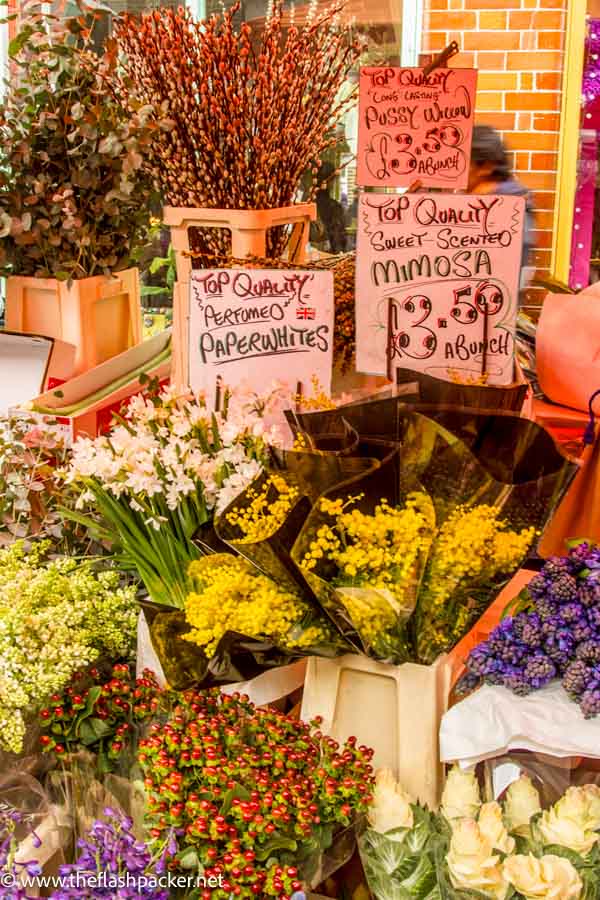
Every Sunday, this road in London’s East End is transformed into a blooming wonderland, its air perfumed with the scent of flowers. Arrive early to get your pick of the blooms (the market is open from 8 am until 3 pm).
If you are after a bargain, arrive around 2 pm when the stallholders start to reduce their prices.
Columbia Road is in the area between Shoreditch and Brick Lane which is brimming with vintage shops, and fantastic cafes and delis.
Nearest Tube Station: Old Street or Bethnal Green
25. Cable Street
Running parallel to the Docklands Light Railway and Commercial Road, this East End street is best known for the Battle of Cable Street.
On 4 October 1936, an alliance of local residents, Communists, anarchists, and Labour and Jewish groups stopped a planned march by Oswald Mosley’s British Union of Fascists. This violent confrontation is graphically depicted in a large mural on the side of St George’s Town Hall.
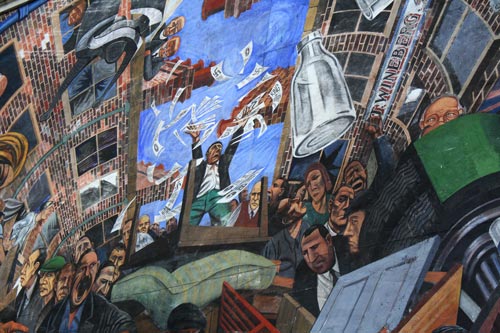
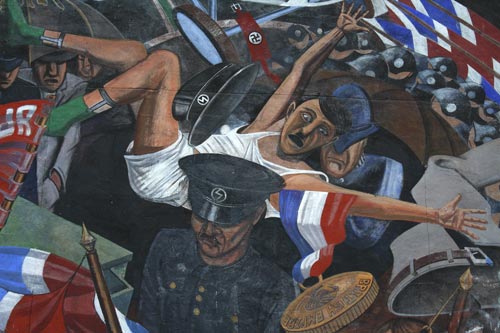
Take a detour to Grace’s Alley just off the western end of Cable Street. Here you will find the 19th Century Wilton’s Music Hall, one of London’s hidden gems.
Nearest DLR – Shadwell
WESTMINSTER
26. Whitehall
Broad, stately Whitehall has been at the heart of political power in England for over a thousand years. Running from Trafalgar Square to Parliament Square, it is lined with many government departments and ministries, including the Ministry of Defence and the Customs and Cabinet Office.
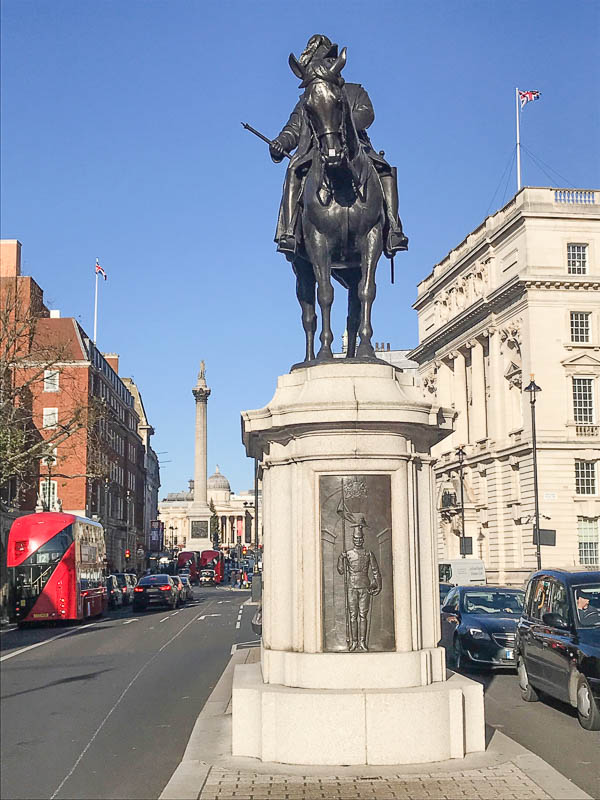
It is named after the Palace of Whitehall, the royal residence from the time of King Henry VIII through to William III. The palace was destroyed by fire in 1698, leaving only the Banqueting House standing.
Whitehall’s most famous monument is the Cenotaph, Britain’s main war memorial and the focal point of the annual Remembrance Day service and parade.
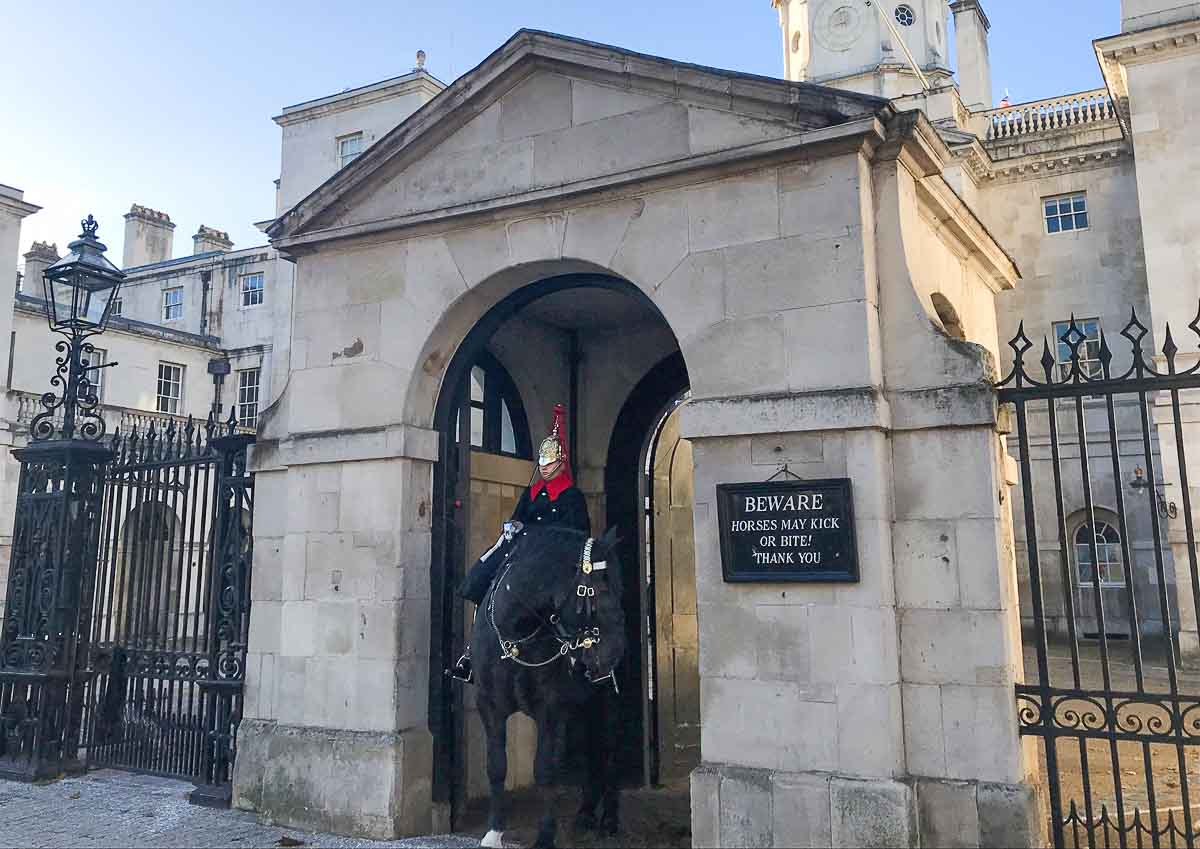
Nearest Tube Station: Westminster
27. Downing Street (London’s most famous street)
Visible from Whitehall is Downing Street, which is named after Sir George Downing (1623 – 84) who built a street of houses on land that he bought near Whitehall Palace. 10 Downing Street has been the official London residence of the Prime Minister since 1732. It is London’s most famous address.
In 1989, for security reasons, large iron gates were erected at the Whitehall end of Downing Street, restricting access to the general public.
You can take a photo of a fake 10 Downing Street doorway at 10 Adam Street, just off The Strand. To the untrained eye, this imposter looks like the real thing.
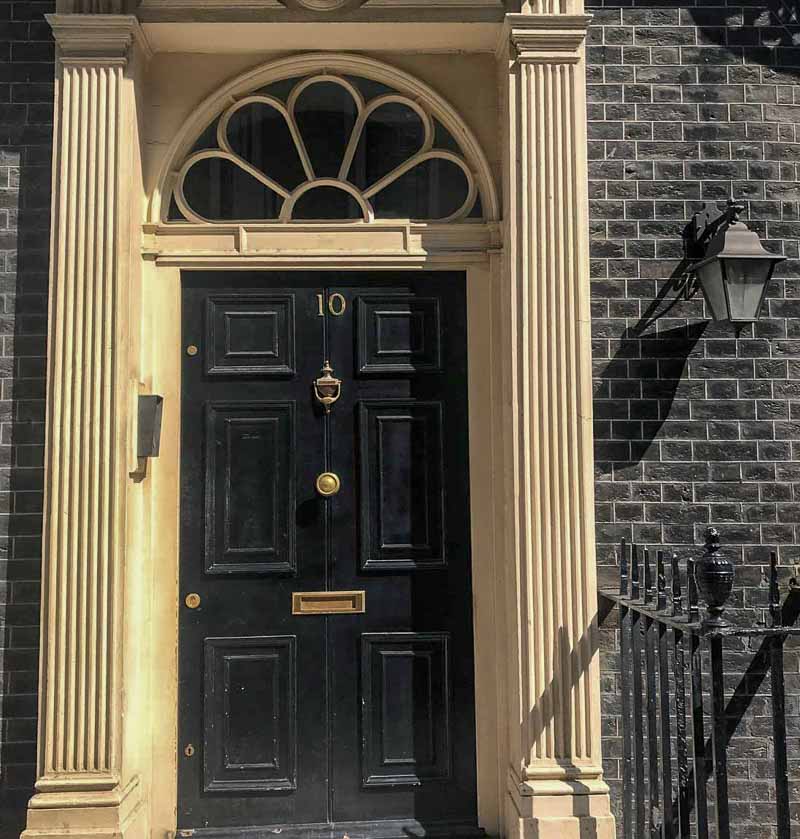
Nearest Tube Station: Westminster
28. The Mall
This sweeping boulevard lined with iconic London plane trees leads from Trafalgar Square, via Admiralty Arch, to Buckingham Palace. The Mall has seen innumerable Royal processions, including coronations and the Queen’s Golden Jubilee celebrations, and is the stage for the Changing of the Guard (dates and times here) and Trooping the Colour.
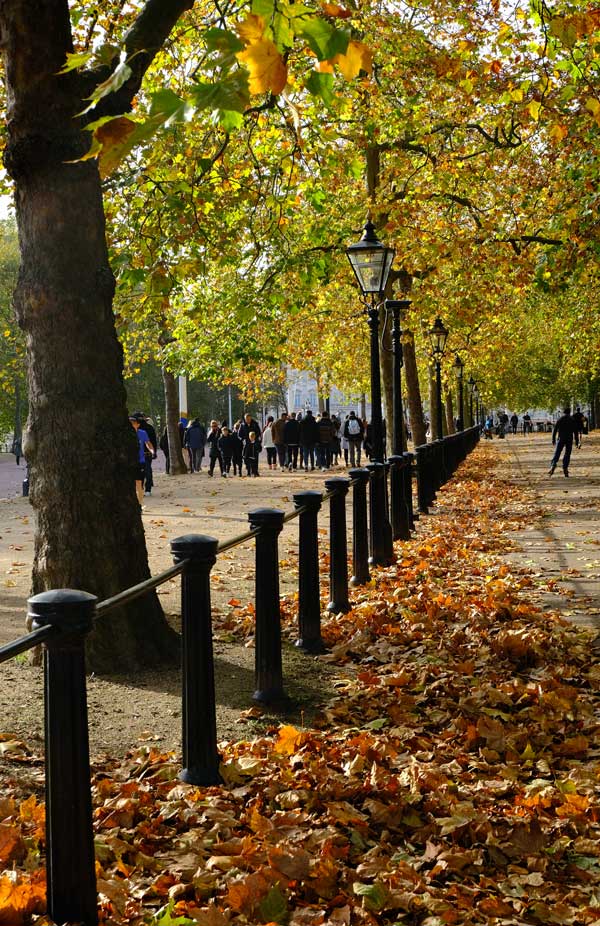
The best time to visit The Mall is on the weekends or public holidays when it is closed to traffic.
Nearest Tube Station: Green Park or Charing Cross
KENSINGTON & CHELSEA
29. Portobello Road
Vibrant Portobello Road is one of my favourite streets in London.
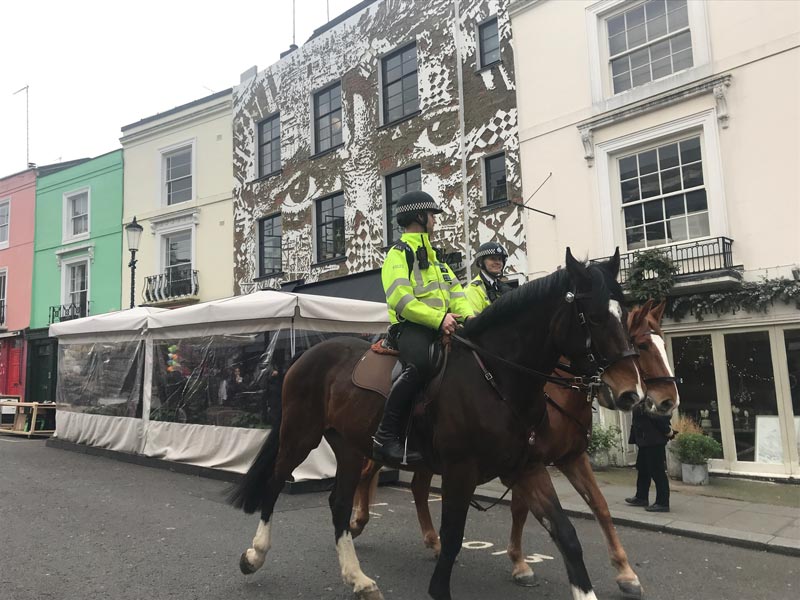
Running through the heart of Notting Hill, this was once a rural lane leading to Portobello Farm. Its famous market began in the mid 19th Century when local gipsies gathered here to trade horses and herbs.
Portobello Road market operates from Monday to Saturday, reaching full swing on Saturdays. Each distinct section of the market sells different types of goods but it is most famous for its antiques and collectables, which are found at the southern end of Portobello Road.
At number 142 is the former Nicholls Arcade. It was here that the scenes depicting Thacker’s bookshop in the 1999 hit movie Notting Hill were shot.
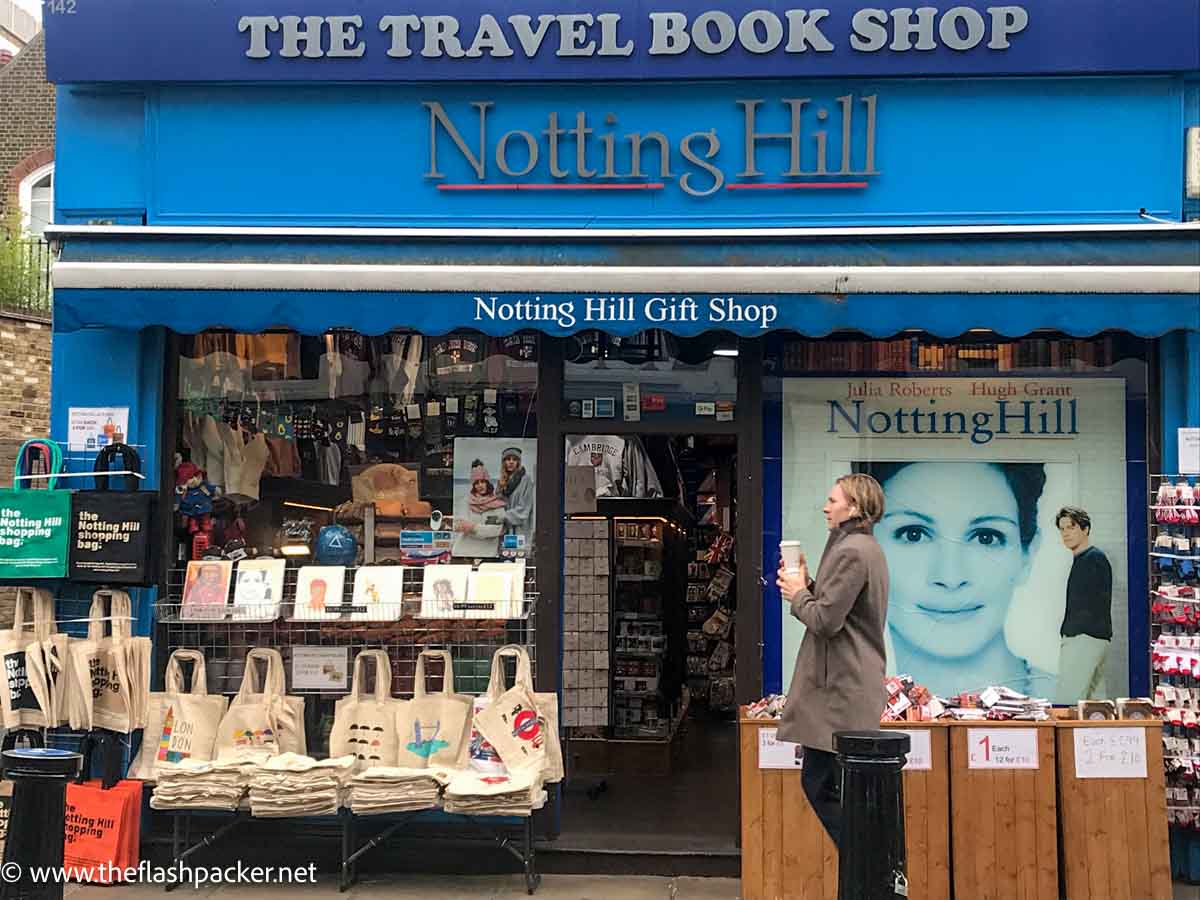
The northern end of Portobello Road, close to the roaring Westway, is more eclectic. Its shops and restaurants are a testimony to the waves of immigrants who have settled here over the last 100 years or so.
On the last weekend of August every year, the road is the scene for one of Europe’s most famous street festivals, the Notting Hill Carnival.
Nearest Tube Station: Notting Hill Gate or Ladbrooke Grove
30. King’s Road
King’s Road is Chelsea’s central artery and the birthplace of both the mini-skirt revolution of the Swinging Sixties and the punk trend of the 1970s. Today it continues to be the home of independent stores and it is one of the best places to shop for the latest style trends.
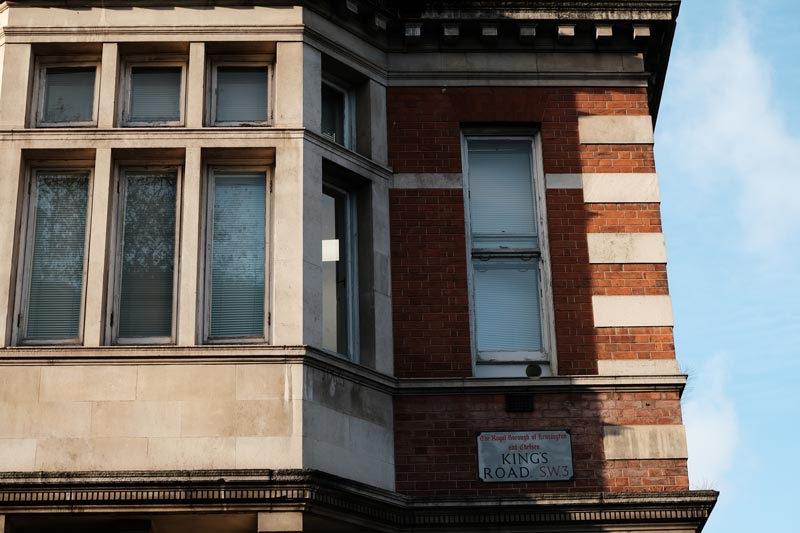
The road dates back to the 17th century when it was used as a private thoroughfare for King Charles II to travel to Kew. It became a public road in 1830.
Nearest Tube Station: Sloane Square
A Handy Map of London’s Famous Streets
The best way to explore London’s iconic streets is on foot. To help you on your way here is a map. Click here or on the image itself for an interactive map and directions.
This map is colour-coded according to the geographic areas in this article:
- Blue: Piccadilly & St. James
- Yellow: West End
- Purple: North London
- Red: Soho & Covent Garden
- Green: The City & East London
- Burgundy: Westminster
- Black: Kensington & Chelsea
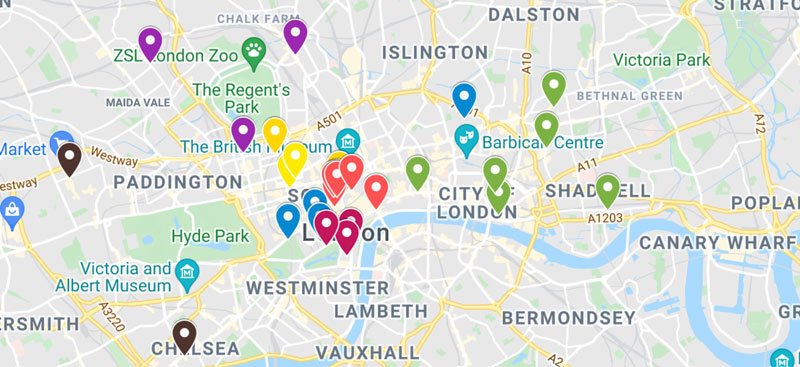
Whether you are a local or a visitor, I hope that this article has inspired you to explore these famous streets in London.
Lastly, I urge you to make discoveries of your own. Venturing down that road or passageway that catches your eye will enrich your visit to London.

About Bridget
Bridget Coleman is a Londoner and has been a passionate traveller for more than 30 years. She has visited 70+ countries, most as a solo traveller.
Articles on this site reflect her first-hand experiences.
To get in touch, email her at hello@theflashpacker.net or follow her on social media.

